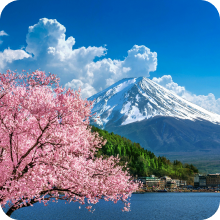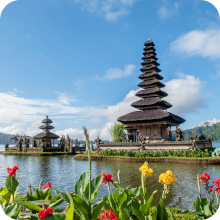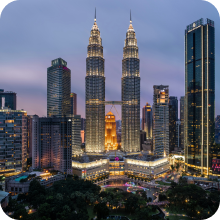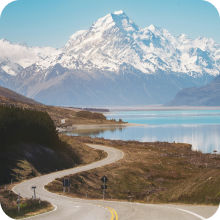Bali's Best Time to Visit: Insider's Guide
Table of Contents
- Understanding Bali's Climate: A Tropical Ballet
- The Wet Season: Embrace the Rain, Dance in the Green
- The Dry Season: Sun, Sand, and Serenity
- Balinese Festivals and Cultural Events: A Cultural Extravaganza
- Crowds and Pricing: Navigating the Peaks and Valleys
- Personal Preferences and Activities: Tailoring Your Bali Adventure
- Wet Season Adventures
- Dry Season Escapades
- Frequently Asked Questions (FAQs)
- Is it possible to enjoy Bali during the wet season?
- Are there any specific cultural events worth planning a trip around?
- When is the best time to avoid crowds and get better deals?
- What activities are best suited for the dry season?
- How far in advance should I plan my trip to secure the best prices?
Greetings, fellow explorers! Welcome to the captivating island paradise of Bali, where each sunrise paints a masterpiece and every sunset whispers tales of wonder. If you're contemplating the perfect time to set foot on this tropical haven, fear not, for I, your humble guide, am here to unravel the secrets of Bali's ever-shifting climate and its kaleidoscopic cultural tapestry.
Understanding Bali's Climate: A Tropical Ballet
Bali, like an unpredictable artist, gracefully alternates between two main acts – the Wet Season and the Dry Season. Let's immerse ourselves in the rhythms of these seasons and uncover the hidden gems they bring forth.
The Wet Season: Nature's Spa Day
Embrace the lushness! The wet season, from November to March, unveils a Bali adorned in a cloak of vibrant green. Yes, rain showers may make an appearance, but consider them as Mother Nature's way of pampering the island. The result? Enchanting landscapes that could rival the finest artwork.
Dance in the rain-soaked magic of iconic rice terraces in Ubud or witness waterfalls in Munduk cascading with newfound vigor. The wet season transforms Bali into a fairy tale, inviting you to explore its natural beauty in a different light.
If you're concerned about outdoor activities, worry not. While some water-centric adventures might need a rain check, Bali's cultural and spiritual side shines during the wet season. Engage in vibrant ceremonies and temple festivals, gaining an intimate glimpse into the island's rich soul.
The Dry Season: Sunlit Serenity
Fast forward to April to October, and behold the dry season – a sun-soaked symphony that turns Bali into a haven for sun worshippers. Imagine days filled with sunshine, temperatures that make winter a distant memory, and evenings kissed by a gentle tropical breeze. It's the epitome of a tropical paradise.
The beaches during the dry season are a vision. Whether you're conquering the legendary waves of Uluwatu or indulging in serene moments on the sands of Seminyak, the dry season sets the stage for your ideal beach day. Dive into crystal-clear waters to discover vibrant coral reefs and an underwater world teeming with life.
Yet, the dry season is not solely about beaches. It's an invitation to explore Bali's diverse landscapes, from hiking the volcanic terrain of Mount Batur to cycling through the verdant countryside. This season beckons you to uncover every nook and cranny of Bali beneath the warm embrace of the tropical sun.
The Wet Season: Embrace the Rain, Dance in the Green
So, what's the deal with the wet season, you ask? Beyond occasional raindrops, this period transforms Bali into a verdant wonderland. Imagine terraced rice fields glistening under the rain, their greenery reaching new heights. Waterfalls cascade with newfound vigor, turning every corner into a canvas painted by nature itself.
Sure, you might need an umbrella, but consider it a stylish accessory to accompany your explorations. The wet season brings a different kind of beauty, a lush and vibrant side of Bali that contrasts the sunny postcards we often see. Think of it as an opportunity to witness the island in a state of perpetual rejuvenation.
Tips for the Wet Season:
- Pack a lightweight rain jacket or poncho for sudden showers.
- Embrace the slower pace of travel and enjoy the lush landscapes.
- Attend cultural events and temple festivals that come alive during this time.
The Dry Season: Sun, Sand, and Serenity
Now, let's bask in the glory of the dry season. Think of it as Bali's way of saying, "Let's turn up the heat!" The sun shines brightly, the air is filled with tropical scents, and every beach beckons you to unwind and soak it all in.
Beach Bliss
The dry season turns Bali's beaches into a postcard-perfect haven. Whether you're a surfer seeking the legendary waves of Uluwatu or a sun-seeker lounging on the pristine sands of Seminyak, the dry season caters to every beach lover's dream. The waters are crystal clear, inviting you to take a dip and explore the vibrant underwater world beneath the surface.
Outdoor Adventures
Beyond the beaches, the dry season opens up a realm of outdoor adventures. Strap on your hiking boots for a trek up Mount Batur, where breathtaking sunrise views await. Grab a bicycle and explore the lush countryside, passing through emerald-green rice paddies and quaint villages. The dry season is an ideal time for those seeking an active and adventurous Bali experience.
Tips for the Dry Season:
- Stay hydrated, as the tropical sun can be quite intense.
- Plan outdoor activities early in the morning or during the late afternoon for milder temperatures.
- Explore Bali's diverse landscapes, from volcanoes to terraced rice fields.
Balinese Festivals and Cultural Events: A Cultural Extravaganza
Beyond the weather, Bali boasts a rich tapestry of cultural events and festivals that add a vibrant layer to your travel experience. Timing your visit to coincide with these celebrations provides a unique and immersive understanding of Balinese traditions.
Nyepi: The Balinese Day of Silence
One cultural highlight during the wet season is Nyepi, the Balinese New Year. It marks a day of absolute stillness, with the entire island observing silence, turning off lights, and staying indoors. While this might sound unusual for a travel experience, witnessing Nyepi is a profound cultural encounter.
Galungan: Celebrating Good Over Evil
Another noteworthy celebration is Galungan, a Balinese Hindu festival that symbolizes the victory of good over evil. Intricately decorated penjor (bamboo poles) line the streets, and communities come together for prayers and festivities. Engaging in the Galungan celebrations offers a glimpse into the spiritual depth of Bali's culture.
Tips for Cultural Events:
- Check the calendar for specific festival dates before planning your trip.
- Respect local traditions and customs during these events.
- Participate in community activities to enhance your cultural immersion.
Crowds and Pricing: Navigating the Peaks and Valleys
While weather plays a crucial role, savvy travelers understand the impact of crowds and pricing on their Bali experience. Let's explore the highs and lows of visitor numbers and costs.
Peak Season: July and August
These months are Bali's prime time, attracting visitors from across the globe. Picture vibrant nightlife, bustling beaches, and an energetic atmosphere. July and August are the peak of the peak season, and while the island is undoubtedly alive with activity, it comes at a cost – both in terms of crowds and pricing.
Navigating the Peak Season:
- Plan and book well in advance, especially for accommodation and popular activities.
- Embrace the lively atmosphere and energy that comes with peak season.
Shoulder Seasons: April to June and September to October
For those seeking a balance between favorable weather and fewer crowds, the shoulder seasons are a sweet spot. April to June and September to October offer a more tranquil Bali experience, with the added bonus of potential cost savings on accommodation and tours.
Benefits of the Shoulder Seasons:
- Enjoy pleasant weather with fewer tourists around.
- Explore popular attractions without the peak-season hustle.
Personal Preferences and Activities: Tailoring Your Bali Adventure
Now, my fellow wayfarer, let's delve into a crucial aspect often overlooked – aligning your Bali journey with personal preferences and desired activities. Bali is more than just a destination; it's a canvas waiting for you to paint your adventure.
Thanks for visiting our blog, are you planing to travel to Bali? Check out our Bali SIM card or our eSIM Bali before you take off.

Wet Season Adventures
If the thought of exploring lush landscapes and cultural events during occasional rain showers appeals to you, the wet season is your time to shine. Consider these activities:
Cultural Immersion
- Attend vibrant temple festivals and ceremonies.
- Engage with local communities participating in traditional rituals.
Nature Exploration
- Discover cascading waterfalls in Munduk and Gitgit.
- Explore the verdant landscapes of Bali's iconic rice terraces.
Dry Season Escapades
For sun-seekers and thrill-seekers alike, the dry season opens up a world of possibilities. Pack your sunscreen and dive into these activities:
Beach Bliss
- Surf the legendary waves of Uluwatu and Padang Padang.
- Relax on the pristine sands of Seminyak or Nusa Dua.
Outdoor Adventures
- Hike to the summit of Mount Batur for a sunrise spectacle.
- Cycle through the scenic countryside and picturesque villages.
Tips for Tailoring Your Adventure:
- Consider your preferred activities when choosing the timing of your trip.
- Create a flexible itinerary that accommodates both weather conditions and personal interests.
- Embrace the spontaneity of travel, allowing room for unexpected discoveries.
In the end, the best time to visit Bali is a delightful dilemma, with each season offering its unique charm. Whether you're enticed by the allure of lush landscapes and cultural festivities or the sun-soaked beaches and outdoor adventures, Bali welcomes you with open arms. The choice is yours, dear traveler, and rest assured, an unforgettable journey awaits. Check out local government sites before visiting.
Frequently Asked Questions (FAQs)
Is it possible to enjoy Bali during the wet season?
Absolutely! While there's occasional rainfall, the lush landscapes and fewer crowds can make it a unique and enjoyable experience.
Are there any specific cultural events worth planning a trip around?
Definitely! Nyepi and other festivals offer an immersive cultural experience, providing insight into Bali's rich heritage.
When is the best time to avoid crowds and get better deals?
Consider visiting during the shoulder seasons (April to June and September to October) for fewer crowds and potential cost savings.
What activities are best suited for the dry season?
The dry season (April to October) is perfect for water sports, beach activities, and exploring outdoor attractions with pleasant weather.
How far in advance should I plan my trip to secure the best prices?
For peak season (July and August), it's advisable to book at least a few months in advance. Shoulder seasons offer more flexibility.









